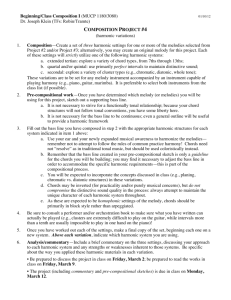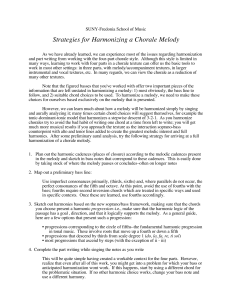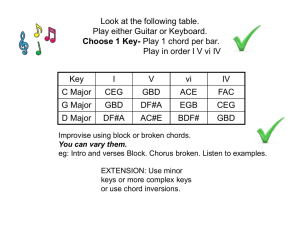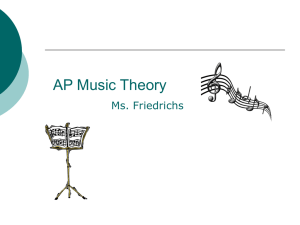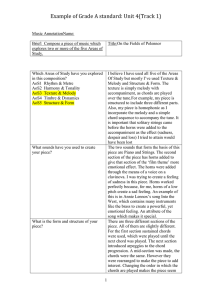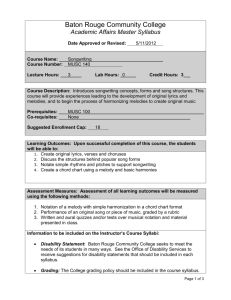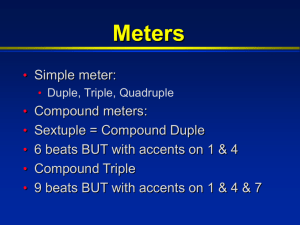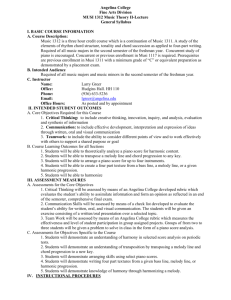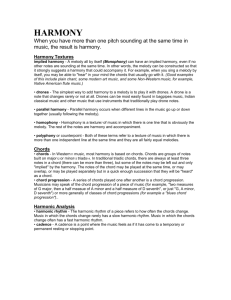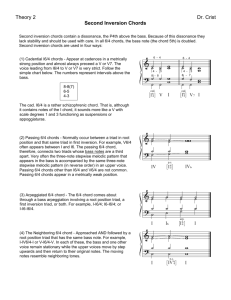File - Mary Ellen Haupert
advertisement
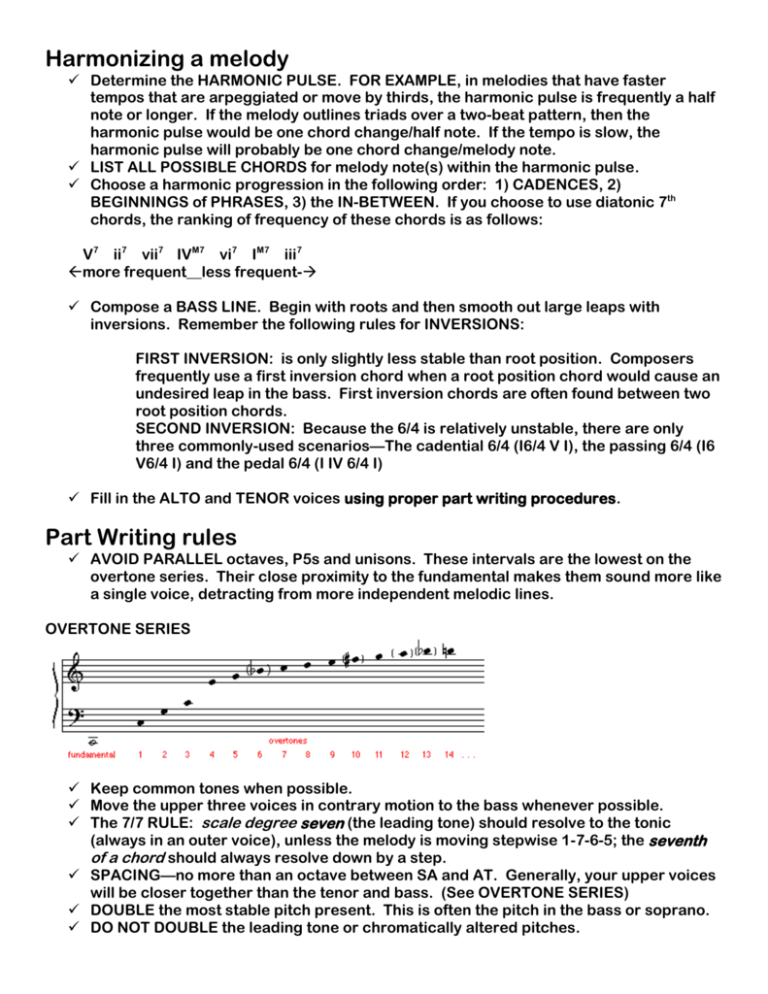
Harmonizing a melody Determine the HARMONIC PULSE. FOR EXAMPLE, in melodies that have faster tempos that are arpeggiated or move by thirds, the harmonic pulse is frequently a half note or longer. If the melody outlines triads over a two-beat pattern, then the harmonic pulse would be one chord change/half note. If the tempo is slow, the harmonic pulse will probably be one chord change/melody note. LIST ALL POSSIBLE CHORDS for melody note(s) within the harmonic pulse. Choose a harmonic progression in the following order: 1) CADENCES, 2) BEGINNINGS of PHRASES, 3) the IN-BETWEEN. If you choose to use diatonic 7th chords, the ranking of frequency of these chords is as follows: V7 ii7 vii7 IVM7 vi7 IM7 iii7 more frequent__less frequent- Compose a BASS LINE. Begin with roots and then smooth out large leaps with inversions. Remember the following rules for INVERSIONS: FIRST INVERSION: is only slightly less stable than root position. Composers frequently use a first inversion chord when a root position chord would cause an undesired leap in the bass. First inversion chords are often found between two root position chords. SECOND INVERSION: Because the 6/4 is relatively unstable, there are only three commonly-used scenarios—The cadential 6/4 (I6/4 V I), the passing 6/4 (I6 V6/4 I) and the pedal 6/4 (I IV 6/4 I) Fill in the ALTO and TENOR voices using proper part writing procedures. Part Writing rules AVOID PARALLEL octaves, P5s and unisons. These intervals are the lowest on the overtone series. Their close proximity to the fundamental makes them sound more like a single voice, detracting from more independent melodic lines. OVERTONE SERIES Keep common tones when possible. Move the upper three voices in contrary motion to the bass whenever possible. The 7/7 RULE: scale degree seven (the leading tone) should resolve to the tonic (always in an outer voice), unless the melody is moving stepwise 1-7-6-5; the seventh of a chord should always resolve down by a step. SPACING—no more than an octave between SA and AT. Generally, your upper voices will be closer together than the tenor and bass. (See OVERTONE SERIES) DOUBLE the most stable pitch present. This is often the pitch in the bass or soprano. DO NOT DOUBLE the leading tone or chromatically altered pitches.


